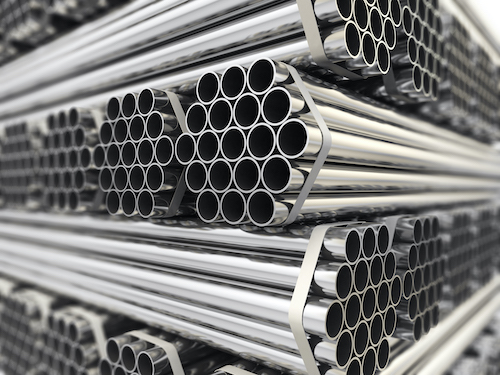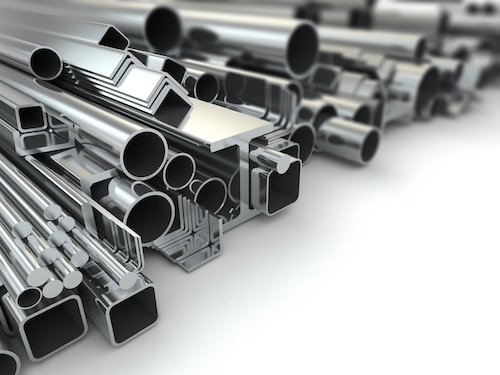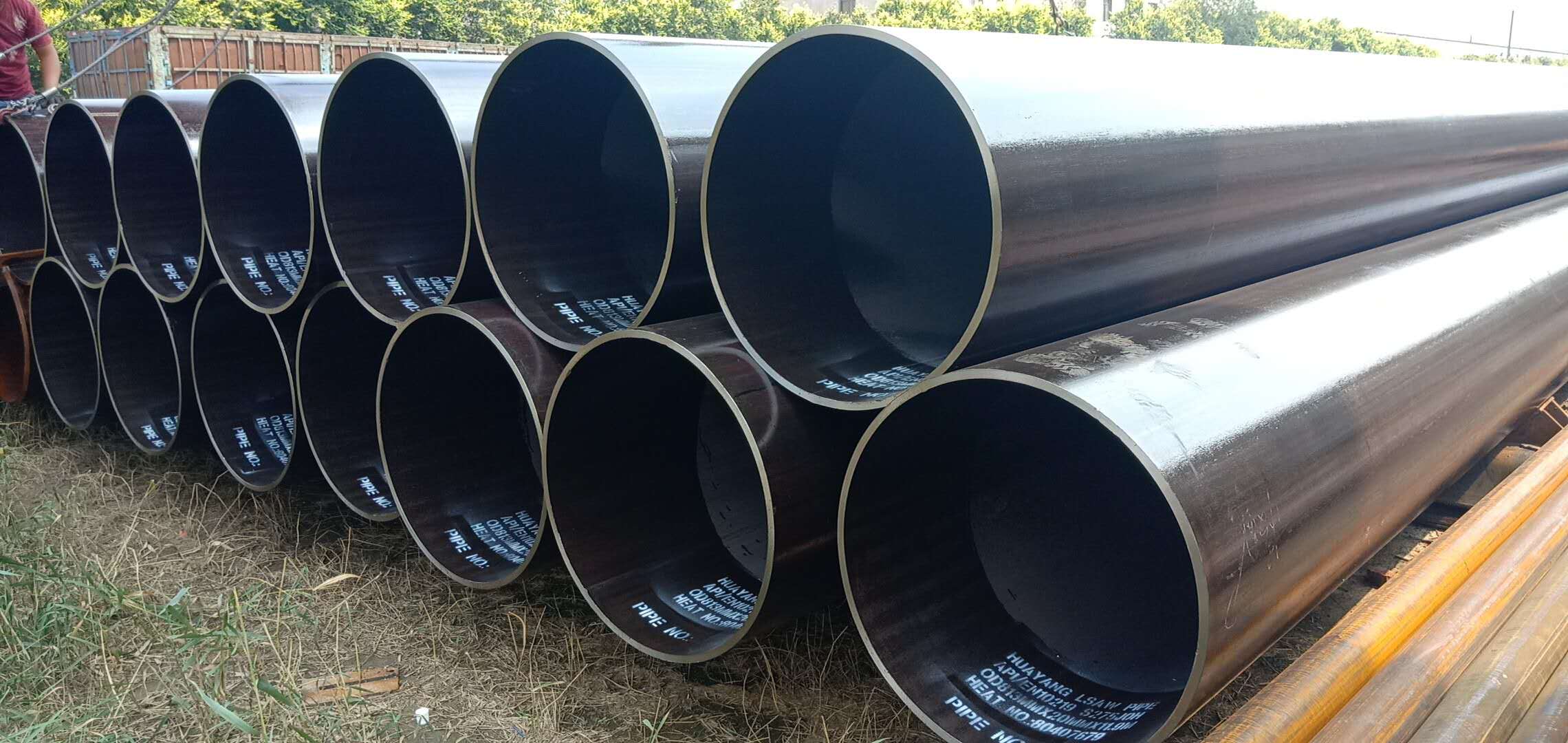Jan . 25, 2024 17:33 Back to list
Stainless steel-What is Stainless Steel?
Is Stainless Steel Magnetic or Non-Magnetic? Explained Here

If you were to ask ten different people if stainless steel is magnetic or non-magnetic, you would likely receive a variety of responses. Most of us have experienced scenarios where something magnetic will fall off something made of stainless steel. Conversely, we’ve seen magnetic items stick to stainless steel in other situations.
So, is stainless steel magnetic or not? The answer is not as straightforward as people think. It actually depends on the type of stainless steel. Some types are magnetic, while others are not.
In this article, we’ll review the basics of stainless steel magnetism to help you understand the differences in stainless steel and why some are magnetic while others are not.
What is Stainless Steel?
Stainless steel is often called the world's most popular metal. Stainless steel is actually a generic term that refers to a variety of different steel types. Stainless steel primarily consists of iron and carbon made in a two-step process.
What makes stainless steel different from other types of steel is the addition of chromium, as well as other elements like nickel. These elements create steel that is resistant to corrosion. Adding chromium to the steel creates a protective surface that prevents air and moisture from causing rust.
What Makes Stainless Steel Magnetic?
Two conditions will cause stainless steel to be magnetic:
- • Stainless steel contains iron.
- • Stainless steel has a crystal structure arranged in a ferritic or martensitic structure.
All stainless steel contains iron, which should theoretically make them magnetic. However, not all stainless steel has a ferritic or martensitic crystal structure. Some have an austenite structure, which makes them non-magnetic.

Which Stainless Steel Types Are Magnetic?
If we follow the logic stated above, then the following types of stainless steel would qualify as magnetic:
- • Ferritic stainless steel, including grades like 409 and 439
- • Martensitic stainless steel, including grades like 410 and 440
- • Duplex stainless steel (a combination of ferritic and austenitic), including grades like 2205
Structural Steel Pipe
Ferritic Stainless Steel
Ferritic is composed of iron and other elements. Since ferritic stainless steel typically contains large amounts of ferrite, they are usually magnetic. However, the strength of the magnetic pull varies among the different ferritic stainless steel types.
Ferritic stainless steel is typically less expensive with better engineering properties. However, with their lower chromium and nickel content, they are less resistant to corrosion.
Grades of Ferritic Stainless Steel
- • 409 is an automotive exhaust grade.
- • 430 and 430F are resistant to mildly corrosive environments.
- • F20S is a ferritic alternative to grade 304 or 304L.
- • F18MS / 444 is a ferritic alternative to grade 316 or 316L.
Martensitic Stainless Steel
Martensitic stainless steel contains chromium but no nickel. If iron is present, the crystal structure can be ferromagnetic. As a result, many of the different martensitic stainless steel types are magnetic.
Martensitic stainless steel is resistant to corrosion.
Grades of Martensitic Stainless Steel
- • 410 is a standard grade suitable for low-duty hardened applications.
- • 416 is a free-machining bar grade.
- • 420 has a higher hardness level making it suitable for cutlery and cutting tools.
- • 431 is primarily used for shafting due to its hardness and toughness.
- • 440A, 440B, and 440C are very high hardness grades primarily used in the construction of cutting tools.
Duplex Stainless Steel
Duplex stainless steel is a blend of austenite and ferrite. Ferrite is the larger component of the two, so duplex stainless steel tends to be magnetic. Due to the presence of austenite, the magnetic strength of this type is typically lower than that of the previously discussed types of stainless steel.
Grades of Duplex Stainless Steel
- • 2101 is an economical alternative to 304 and 316.
- • 2304 is an alternative to 316.
- • 2205 is highly resistant to pitting and stress corrosion.
- • 2507 and 2507CU are also highly resistant to pitting and stress corrosion.
Austenitic Stainless Steel
Austenitic stainless steel contains a large quantity of chromium and nickel. The increased nickel content makes most austenitic stainless steel non-magnetic.
Austenitic stainless steel is the most common type of stainless steel and often used in appliances, kitchen equipment, automotive trim, chemical equipment, and pharmaceutical equipment.
Grades of Austenitic Stainless Steel
- • 301, 301L, and 301LN are suitable for roll-formed structural components due to their high strength.
- • 302HA is a low work hardening rate grade.
- • 303 and 303Se are free-machining bar grades.
- • 304, 304L and 304H are high corrosion and oxidation resistant
- • 310, 310S and 310H are high temperature resistant.
- • 316, 316L and 316H have increased resistance to pitting corrosion in chloride environments.
- • 321, 321H and 347 are suitable for heavy section welding and higher temperature applications.
- • 253MA is resistant to high temperature.
- • 904L is highly resistant to general corrosion and pitting.
Try the Magnet Test
The next time you are shopping for stainless steel, bring along a magnet as a simple testing tool. If the stainless steel is non-magnetic, then you’ll recognize immediately that it is of higher quality, which typically means it will be more expensive. However, magnetic stainless steel remains extremely useful for many applications, often depending on the environment in which it will be used.
-
High Quality Mild Steel Pipe Manufacturers in China for Exporting Premium Industrial Solutions
NewsAug.01,2024
-
Exploring Key Characteristics of Wholesale API Steel Pipes for Your Business Needs
NewsAug.01,2024
-
Current Wholesale Prices for ERW Steel Pipes in the Market Right Now
NewsAug.01,2024
-
Exploring the Diverse Applications and Benefits of China Round Steel Pipes in Construction and Industry
NewsAug.01,2024
-
Top Quality API 5L ERW Steel Pipe Manufacturer Offering Reliable and Durable Solutions for Your Needs
NewsAug.01,2024
-
Reliable Supplier of Premium Quality Concrete Pipes for Durable Construction Projects
NewsAug.01,2024
Jan . 25, 2024 15:49 Back to list
Welded Steel Pipe-Stainless steel what is Stainless steel
Stainless steel, also known as inox, corrosion-resistant steel (CRES) and rustless steel, is an alloy of iron that is resistant to rusting and corrosion. It contains at least 10.5% chromium and usually nickel, as well as 0.2 to 2.11% carbon. Stainless steel's resistance to corrosion results from the chromium, which forms a passive film that can protect the material and self-heal in the presence of oxygen.[1]: 3
The alloy's properties, such as luster and resistance to corrosion, are useful in many applications. Stainless steel can be rolled into sheets, plates, bars, wire, and tubing. These can be used in cookware, cutlery, surgical instruments, major appliances, vehicles, construction material in large buildings, industrial equipment (e.g., in paper mills, chemical plants, water treatment), and storage tanks and tankers for chemicals and food products.
The biological cleanability of stainless steel is superior to both aluminium and copper, and comparable to glass.[2] Its cleanability, strength, and corrosion resistance have prompted the use of stainless steel in pharmaceutical and food processing plants.[3]
Different types of stainless steel are labeled with an AISI three-digit number.[4] The ISO 15510 standard lists the chemical compositions of stainless steels of the specifications in existing ISO, ASTM, EN, JIS, and GB standards in a useful interchange table.
Properties
Corrosion resistance
Although stainless steel does rust, this only affects the outer few layers of atoms, its chromium content shielding deeper layers from oxidation.
The addition of nitrogen also improves resistance to pitting corrosion and increases mechanical strength.[6] Thus, there are numerous grades of stainless steel with varying chromium and molybdenum contents to suit the environment the alloy must endure.Corrosion resistance can be increased further by the following means:
- increasing chromium content to more than 11%[6]
- adding nickel to at least 8%[6]
- adding molybdenum (which also improves resistance to pitting corrosion)[6]
Strength[edit]
The most common type of stainless steel, 304, has a tensile yield strength around 30,000 psi (210 MPa) in the annealed condition. It can be strengthened by cold working to a strength of 153,000 psi (1,050 MPa) in the full-hard condition.
The strongest commonly available stainless steels are precipitation hardening alloys such as 17-4 PH and Custom 465. These can be heat treated to have tensile yield strengths up to 251,000 psi (1,730 MPa).
Melting point[edit]
Stainless steel is a steel, and as such its melting point is near that of ordinary steel, and much higher than the melting points of aluminium or copper. As with most alloys, the melting point of stainless steel is expressed in the form of a range of temperatures, and not a single temperature.[9] This temperature range goes from 1,400 to 1,530 °C (2,550 to 2,790 °F; 1,670 to 1,800 K; 3,010 to 3,250 °R)[10] depending on the specific consistency of the alloy in question.
Conductivity[edit]
Like steel, stainless steels are relatively poor conductors of electricity, with significantly lower electrical conductivities than copper. In particular, the non-electrical contact resistance (ECR) of stainless steel arises as a result of the dense protective oxide layer and limits its functionality in applications as electrical connectors.[11] Copper alloys and nickel-coated connectors tend to exhibit lower ECR values and are preferred materials for such applications. Nevertheless, stainless steel connectors are employed in situations where ECR poses a lower design criteria and corrosion resistance is required, for example in high temperatures and oxidizing environments.[12]
Magnetism[edit]
Martensitic, duplex and ferritic stainless steels are magnetic, while austenitic stainless steel is usually non-magnetic.[13] Ferritic steel owes its magnetism to its body-centered cubic crystal structure, in which iron atoms are arranged in cubes (with one iron atom at each corner) and an additional iron atom in the center. This central iron atom is responsible for ferritic steel's magnetic properties. This arrangement also limits the amount of carbon the steel can absorb to around 0.025%.[14] Grades with low coercive field have been developed for electro-valves used in household appliances and for injection systems in internal combustion engines. Some applications require non-magnetic materials, such as magnetic resonance imaging.[citation needed] Austenitic stainless steels, which are usually non-magnetic, can be made slightly magnetic through work hardening. Sometimes, if austenitic steel is bent or cut, magnetism occurs along the edge of the stainless steel because the crystal structure rearranges itself.[15]
| EN grade | 1.4307 | 1.4301 | 1.4404 | 1.4435 |
|---|---|---|---|---|
| Magnetic permeability, μ | 1.056 | 1.011 | 1.100 | 1.000 |
Wear[edit]
Galling, sometimes called cold welding, is a form of severe adhesive wear, which can occur when two metal surfaces are in relative motion to each other and under heavy pressure. Austenitic stainless steel fasteners are particularly susceptible to thread galling, though other alloys that self-generate a protective oxide surface film, such as aluminum and titanium, are also susceptible. Under high contact-force sliding, this oxide can be deformed, broken, and removed from parts of the component, exposing the bare reactive metal. When the two surfaces are of the same material, these exposed surfaces can easily fuse. Separation of the two surfaces can result in surface tearing and even complete seizure of metal components or fasteners.[17][18] Galling can be mitigated by the use of dissimilar materials (bronze against stainless steel) or using different stainless steels (martensitic against austenitic). Additionally, threaded joints may be lubricated to provide a film between the two parts and prevent galling. Nitronic 60, made by selective alloying with manganese, silicon, and nitrogen, has demonstrated a reduced tendency to gall.[18]
-
High Quality Mild Steel Pipe Manufacturers in China for Exporting Premium Industrial Solutions
NewsAug.01,2024
-
Exploring Key Characteristics of Wholesale API Steel Pipes for Your Business Needs
NewsAug.01,2024
-
Current Wholesale Prices for ERW Steel Pipes in the Market Right Now
NewsAug.01,2024
-
Exploring the Diverse Applications and Benefits of China Round Steel Pipes in Construction and Industry
NewsAug.01,2024
-
Top Quality API 5L ERW Steel Pipe Manufacturer Offering Reliable and Durable Solutions for Your Needs
NewsAug.01,2024
-
Reliable Supplier of Premium Quality Concrete Pipes for Durable Construction Projects
NewsAug.01,2024

